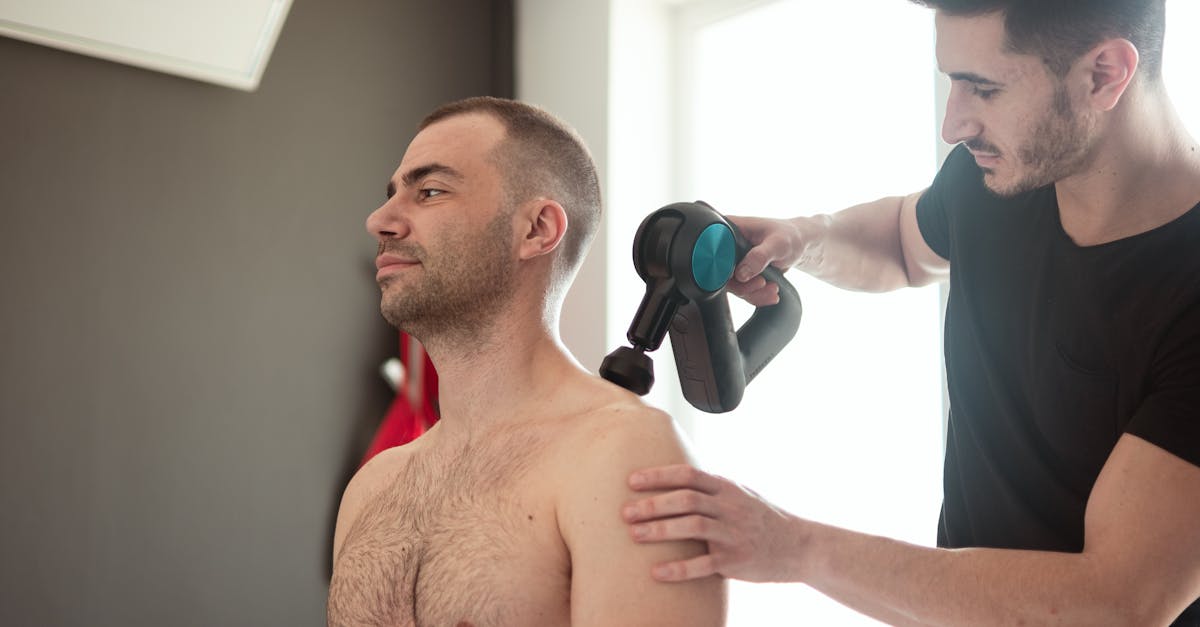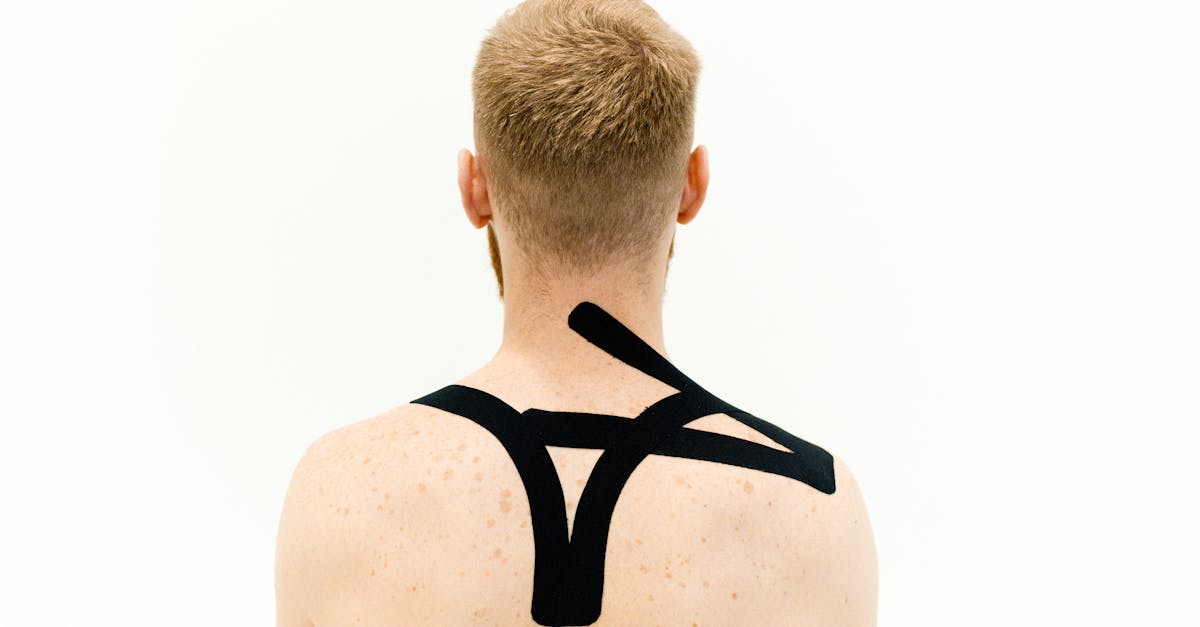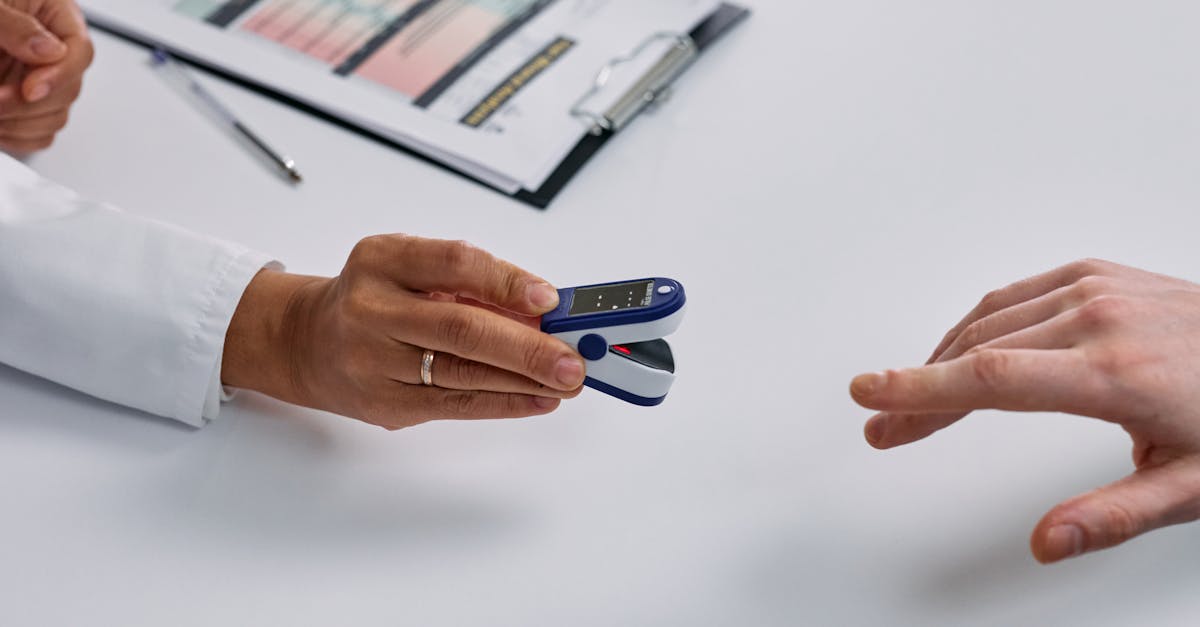Tired of shoulder pain at night disrupting your sleep?
In Short: Shoulder pain at night causing you discomfort? Discover how to sleep with shoulder pain through effective positioning tips and techniques to attain shoulder pain relief. Pulse Align Clinics emphasize a simple, holistic approach to postural recalibration that enhances your sleep quality. Reclaim your health and wellness at Pulse Align Clinics. BOOK YOUR APPOINTMENT today!
Are you struggling with shoulder pain at night?
Minimize shoulder pain at night: Pulse Align’s pre-bedtime tips offer effective solutions for individuals seeking
shoulder pain relief
while sleeping. Many people experience discomfort from conditions such as a
frozen shoulder
or
, leading to restless evenings. With expert advice on
how to sleep with shoulder pain
, incorporating targeted
shoulder pain exercises
can enhance recovery and promote better sleep quality. By understanding
shoulder pain causes
and implementing Pulse Align’s strategies, you can finally say goodbye to sleepless nights plagued by discomfort.

Minimize Shoulder Discomfort at Night: Pulse Align’s Pre-Bedtime Tips
Experiencing shoulder discomfort during the night can disrupt restful sleep and affect overall well-being. Thankfully, with a focus on posture improvement and neuromuscular recalibration, Pulse Align offers innovative strategies to enhance your nighttime comfort.
Understanding Shoulder Discomfort
As lifestyles and daily routines shift, so too do the underlying causes of shoulder discomfort. Factors such as posture, activity levels, and stress can impact your muscle tone and overall balance. Pulse Align’s approach gently stimulates the body to assist in restoring muscle tone symmetry, promoting a natural balance that supports improved posture.
Exploring Holistic Benefits
Emphasizing a holistic approach, Pulse Align recognizes the body’s incredible ability to heal itself. By realigning muscle tone and encouraging proper posture, clients may experience enhanced well-being and a natural reduction in discomfort. The gentle methods utilized at Pulse Align create an inviting environment where anyone—regardless of age—can benefit from the techniques offered.
Client Experiences Speak Volumes
Many clients report feeling a profound difference after engaging with Pulse Align’s methods. For instance, individuals often share how they experience improved posture naturally or observe a reduction in neck discomfort. Testimonials highlight the engaging and supportive nature of the services, making it an appealing option for families seeking well-being together.
Take the First Step Towards Comfort
Ready to explore how Pulse Align can enhance your comfort during the night? Discover the benefits for yourself by booking a consultation today. With locations in Montreal, La Prairie, Terrebonne, Chicoutimi, and more, finding a Pulse Align clinic near you is easy. Visit our locations page to learn more and begin your journey toward improved well-being without compromising your health plan.
Remember, Pulse Align complements your healthcare services and offers an inviting way for families, including children and pregnant women, to participate in their wellness journey. Don’t miss out on this opportunity to enhance your sleep quality and overall postural health. Book your consultation now!
Minimize Shoulder Pain at Night: Pulse Align’s Pre-Bedtime Tips
- Adjust Your Sleeping Position: Favor sleeping on your back.
- Use Supportive Pillows: Select pillows that provide adequate neck support.
- Avoid Sleeping on Affected Side: Give your shoulder a break from pressure.
- Incorporate Gentle Stretches: Perform light stretches before bed to promote relaxation.
- Maintain a Relaxing Bedtime Routine: Engage in calming activities to prepare for sleep.
- Keep Your Environment Comfortable: Ensure your bedroom is conducive to restful sleep.

Minimize Shoulder Pain at Night: Pulse Align’s Pre-Bedtime Tips
Experiencing shoulder pain at night can disrupt your sleep and negatively affect your overall well-being. At Pulse Align, we provide expert suggestions aimed at alleviating nighttime discomfort, improving your neuromuscular health, and ensuring restful sleep. From understanding the causes of shoulder pain to implementing practical strategies for shoulder pain relief, our tips are designed for individuals suffering from conditions like frozen shoulder, rotator cuff injuries, and bursitis. Let’s explore effective methods to help you sleep better despite shoulder pain.
Understanding Shoulder Pain Causes
Nighttime discomfort often arises from shoulder impingement, bursitis, or other underlying conditions like frozen shoulder or tendinitis. Recognizing the source of your pain can facilitate choosing the right strategies for relief. For instance, shoulder pain when lifting arm may indicate a different issue than discomfort felt while at rest. Awareness of your symptoms will guide you in addressing them holistically.
Optimal Sleep Position
One of the simplest ways to improve your sleep is to adjust your sleep position. Sleeping on your back is generally the best position to minimize pressure on the shoulder. If you prefer side sleeping, try placing a pillow between your knees to maintain posture correction and provide extra support. Avoid sleeping on the affected side to facilitate recovery and reduce discomfort, enabling a more restful night.
Use Supportive Pillows
Choosing the right pillow can significantly reduce shoulder pain at night. Opt for pillows with adequate neck support that maintain symmetry in your spine, promoting trunk exercises that alleviate tension. A memory foam pillow might adapt better to your shape, ensuring proper alignment, further enhancing your comfort while you sleep.
Incorporate Shoulder Pain Exercises
Incorporating shoulder pain exercises into your daily routine can help improve flexibility and mobility. Examples include gentle stretches that target the rotator cuff. Consider performing stretches or light mobility drills right before bed to promote relaxation and pain relief. These proactive measures can aid in preventing stiffness that often contributes to discomfort.
Mindful Relaxation Techniques
Engaging in relaxation techniques prior to bedtime can improve your sleep quality. Try deep breathing exercises or gentle yoga stretching to calm your nervous system and relieve tension around the shoulders. Such practices not only foster a tranquil mindset but also enhance your body’s ability to naturally recalibrate and restore balance throughout the night.
Seek Professional Guidance
If your shoulder pain persists despite implementing these tips, consulting a professional at Pulse Align may be beneficial. Our team specializes in personalized assessments and shockwave therapy, which can be pivotal in treating persistent pain conditions effectively. By addressing your individual needs, we can develop a tailored approach to foster your long-term recovery.
Take Action for Better Sleep
Don’t let shoulder pain dictate your nights any longer! Implement these practical tips to enhance your sleep quality and manage your discomfort. For a comprehensive approach to your shoulder pain alleviation journey, consider booking a consultation with Pulse Align. We offer expert guidance tailored to your needs and can assist in creating an individualized plan for a pain-free night’s sleep.
Minimize Shoulder Pain at Night: Pulse Align’s Pre-Bedtime Tips
| Tip | Description |
|---|---|
| Sleep Position | Favor sleeping on your back to reduce shoulder pressure. |
| Supportive Pillows | Use pillows that provide adequate neck support while minimizing strain. |
| Avoid Affected Side | Sleep on the opposite side to give your shoulder a break. |
| Maintain Spine Alignment | Keep your head, neck, and back aligned for optimal balance. |
| Stretch Before Bed | Gentle stretching can promote relaxation and ease tension. |
| Warm Compress | Apply a warm compress to encourage muscle relaxation. |
| Nighttime Routine | Establish a calming pre-sleep routine to enhance restfulness. |
| Elevated Arm Position | Elevate your arm with an extra pillow to alleviate pressure. |
| Mindfulness Practices | Incorporate deep breathing or meditation to promote relaxation. |
| Stay Hydrated | Drink enough water throughout the day to support recovery. |

Transformative Wellness Experiences with Pulse Align
Clients across various regions, including Châteauguay and Mont-Royal, have praised Pulse Align’s unique approach to minimizing shoulder pain at night. Many have reported feeling a natural improvement in their overall well-being, which they attribute to the holistic recovery strategies provided by the clinic. One client stated, “I never thought I could sleep through the night without shoulder pain. Thanks to Pulse Align’s pre-bedtime tips, I feel rejuvenated and balanced every morning!”
In Terrebonne, clients have shared their appreciation for Pulse Align’s ability to support the body’s natural ability to recalibrate. “The gentle techniques they use helped me rediscover a peaceful night’s sleep, something I hadn’t experienced in years. It’s like my body is finally in sync,” noted another satisfied client.
People in Saint-Jérôme have also benefited immensely. A client from this area shared, “Pulse Align gave me practical tips to adjust my sleeping position, which significantly reduced my shoulder discomfort at night. Their focus on holistic practices has truly transformed my wellness journey.” This aligns perfectly with the clinic’s mission to enhance body function and promote self-regeneration.
Residents of Sainte-Marie and surrounding areas can recognize the added value of Pulse Align’s services. Many clients report that their overall health, sleep quality, and resilience have improved remarkably since beginning their journey with Pulse Align. “It’s amazing how small changes can lead to big results. I feel more balanced and grounded,” remarked a long-term client.
Pulse Align emphasizes collaboration with healthcare teams and supports clients and their families on their wellness journeys. To explore further how Pulse Align can assist you or someone you know, visit Our Clinics for more information about our locations and services.
Our Approach to Shoulder Pain Relief
At Pulse Align, we understand the challenges that come with shoulder pain, especially when it disrupts your nighttime rest. That’s why we offer effective sleep strategies tailored to alleviate discomfort and enhance your overall sleep quality. Our guidance helps you rediscover restful nights by focusing on proper positioning and support.
Many individuals experience shoulder pain due to various conditions such as frozen shoulder, rotator cuff injuries, or bursitis. We provide insights into managing these conditions and offer expert tips aimed at improving your sleep while promoting shoulder relief. The right sleep strategies can significantly contribute to your recovery and overall well-being.
We focus on advocating for effective sleep tips that encourage better sleeping positions. For instance, we advise favoring sleeping on your back to alleviate pressure on your shoulder. Additionally, using supportive pillows that maintain proper neck support is essential in minimizing shoulder strain and ensuring your spine remains in a neutral alignment.
Recognizing the importance of early intervention, we encourage you to consult a healthcare professional if your shoulder pain persists. Timely diagnosis and management can prevent further complications and pave the way for effective treatment options, which may include physical therapy or medications.
Our mission is to deliver evidence-based, client-centered treatments that address the underlying causes of pain and dysfunction. By integrating advanced techniques and technologies, we strive to empower each person to take control of their health, ensuring a high standard of care, lasting relief, and an improved quality of life.
To learn more about our approach and available services, visit www.pulsealign.com and find a location near you here.
Revolutionize Your Recovery: Discover TAGMED’s Spinal Decompression Therapy
Welcome to TAGMED, where we offer advanced Spinal Decompression Therapy tailored to tackle moderate-to-severe disc issues. This non-surgical solution is designed specifically for individuals suffering from persistent symptoms linked to conditions like herniated discs, bulging discs, spinal stenosis, and other chronic pain conditions. By gently reducing pressure on the affected areas, our therapy enhances mobility, alleviates pain, and supports your body’s natural healing process. If you’ve plateaued with other treatments, explore how TAGMED’s evidence-based decompression approach can pave your way toward an active, vibrant life.
Have you tried conventional treatments and still struggle with persistent back pain due to a severe disc condition?
Mechanism of Action
TAGMED’s neurovertebral decompression technique employs a controlled, progressive traction force that is methodically applied to the spine. This technique increases the space between vertebrae, which reduces pressure on intervertebral discs and nerve roots, promoting better fluid circulation in these critical areas. By targeting chronic inflammation, this innovative therapy effectively lowers discomfort and pain, making it a reliable, non-invasive option for individuals facing persistent back pain.
Specific Benefits
The non-invasive nature of TAGMED’s approach provides substantial relief from chronic pain and symptoms related to various conditions, including degenerative disc disease and facet syndrome. This therapy optimally reduces pressure on nerve structures while enhancing fluid circulation around the affected discs, which can accelerate recovery and elevate the overall quality of life for patients navigating lingering discomfort. Clients report marked improvements, leading to a more fulfilling daily routine without the constraints of pain.
Comparison with Other Treatments
Compared to traditional interventions such as pain medications, corticosteroid injections, surgery, and standard physiotherapy, TAGMED’s neurovertebral decompression offers unique advantages. It eliminates invasive procedures and minimizes medication-related risks, thus paving a potentially quicker path to recovery. Patients seeking safer, evidence-based alternatives find this treatment compelling, especially when conventional methods fail to deliver sustainable relief.
Case Studies or Testimonials
Numerous patients have experienced significant improvements through TAGMED’s neurovertebral decompression. Testimonials highlight lasting pain relief, a quicker return to regular activities, and a reduced reliance on pharmaceuticals for chronic pain management. These real-world examples shed light on the practical advantages of this therapeutic approach, underscoring its efficacy and patient-centered design.
Embrace Restful Nights: The Benefits of Pulse Align’s Pre-Bedtime Tips
Are you tired of tossing and turning at night due to shoulder pain? With Pulse Align’s expert tips, you can cultivate a sleep environment that promotes improved posture, reduces discomfort, and enhances your overall wellness. Our approach is centered around natural pain relief strategies that steer away from invasive methods, allowing your body to tap into its inherent healing capabilities.
Clients have discovered a new level of comfort and rejuvenation through our gentle guidance. By focusing on holistic health and the body’s unique ability to recalibrate, we assist individuals in achieving significant improvements in their sleep quality and daily functioning. Our tips prioritize your experience, ensuring you wake up refreshed and ready to embrace the day.
Don’t let shoulder pain steal your nights any longer. Schedule your consultation now and discover the Pulse Align difference today. With dedicated practices aimed at posture correction and enhancing body alignment, your journey to better sleep and increased mobility is just a step away. Join many who have transformed their nights into peaceful escapes—it’s time to consult with us and embark on a path toward profound relief.

Do you suffer from discomfort that responds little or not at all to conservative treatments?
At Pulse Align, we understand the quest for balance and comfort amid life’s challenges. Our innovative, non-invasive method employs gentle, imperceptible pulses to help restore the body’s natural equilibrium and posture. By addressing muscle and joint tensions, we embrace a holistic approach that aims to promote well-being and support comfort, particularly during those challenging nighttime hours.
Pulsing with purpose, Pulse Align does not directly confront discomfort or any specific conditions. Instead, we focus on facilitating a natural recalibration of your body. Our approach often leads to remarkable improvements in comfort levels and posture, inspiring our clients to unlock their potential for a better experience, especially at night when rest is paramount.
Every individual’s journey with us is unique, marked by a tailored approach to well-being. We celebrate the stories of our clients who, through our gentle method, have shared their experiences of enhanced relaxation and improved posture. While we avoid medical language, the testimonials speak volumes about the amazing shifts they’ve felt in tension across their shoulders and neck, as well as overall wellness. These stories validate our commitment to making well-being accessible and effective for everyone.
We invite you to explore what Pulse Align has to offer by visiting our website. Discover convenient locations in cities like La Prairie, Mont-Royal, and Terrebonne where you and your family can embark on a wellness journey together. Our services are designed to complement your healthcare experience rather than replace it, ensuring a holistic path to harmony. Together with your healthcare team, Pulse Align works to embrace balance and support the body’s natural healing capabilities.
Book your consultation online today and experience our safe, non-invasive, and family-friendly approach. To learn more about our services, visit Pulse Align.
Frequently Asked Questions
Shoulder Pain
- Is overtraining a frequent cause?Yes, excessive training without proper rest can cause micro-tears and shoulder pain.
- Do strengthening exercises help prevent shoulder pain?Yes, strengthening the rotator cuff, back, and core muscles can stabilize the shoulder and lower injury risk.
- Is complete rest recommended?Not necessarily. Complete immobilization can stiffen the joint. Gentle, controlled movement is often beneficial.
- Do wall push-ups relieve shoulder pain?They can gently strengthen stabilizing muscles, but should be done without pain.
- Can referred pain to the shoulder come from another organ?Yes, liver, gallbladder, or heart issues can sometimes cause referred pain in the shoulder.
- Is heat or cold effective for shoulder pain?Cold reduces inflammation and acute pain, while heat relaxes muscles and relieves stiffness.
- Does working at a computer contribute to shoulder pain?A poorly set-up workstation, a keyboard, or mouse placed too far away can cause shoulder tension.
- Are throwing sports more at risk for shoulder problems?Yes, repetitive throwing (baseball, handball) heavily stresses the rotator cuff, raising injury risk.
- Can I do weight training with shoulder pain?It’s better to avoid aggravating exercises and consult a professional to adjust your routine.
- Can medications relieve shoulder pain?Anti-inflammatories, painkillers, and sometimes steroid injections can provide temporary relief.
Simon Leroy understands that shoulder pain can do more than slow you down—it can impact your entire quality of life. As a Shoulder Pain Awareness Advocate at Pulse Align, he’s dedicated to showing readers that genuine relief is not just possible, but within reach. Drawing on the latest research, Simon combines expert insights with compassionate guidance, inspiring people to move toward greater comfort and mobility. His approach is about more than just managing symptoms; it’s about empowering individuals to rediscover their strength and embrace every moment, free from the constraints of pain.
Medical Disclaimer
The information and advice provided on this site do not replace the advice, diagnosis, or treatment of a healthcare professional. Please note that the author of this article is neither a doctor nor a specialist in a medical specialty as defined by the Collège des médecins du Québec. Manual medicine, functional medicine, and sports medicine as described on this site exclude any medical treatment or diagnosis made by a doctor or medical specialist. Always consult your doctor for any medical questions. For more details, please read our complete Legal Notice.
References
- Allan, David, et al. “Head Kinematics Associated with Off-Field Head Injury Assessment (HIA1) Events in a Season of English Elite-Level Club Men’s and Women’s Rugby Union Matches.” Sports Medicine, Nov. 2024, https://doi.org/10.1007/s40279-024-02146-6.
- Cantu, Robert C. “Second-Impact Syndrome.” Clinics in Sports Medicine, vol. 17, no. 1, 1998, pp. 37–44, https://www.sciencedirect.com/science/article/pii/S0278591905700594.
- Putukian, Margot, and K. Harmon. “Head Injuries.” ACSM’s Primary Care Sports Medicine, 2007, pp. 197–215, https://books.google.fr/books?hl=fr&lr=&id=KoeRrA_-td0C&oi=fnd&pg=PA197&dq=%22sports+medicine%22+%2B+%22head+injury%22&ots=3j7rtit66E&sig=TGJTqBOmpahE2jhERWiedpjGAIU.
- Bahr, Roald, and Lars Engebretsen. Handbook of Sports Medicine and Science: Sports Injury Prevention. John Wiley & Sons, 2011, https://books.google.fr/books?hl=fr&lr=&id=YqyDrQ1nLbUC&oi=fnd&pg=PT8&dq=%22sports+medicine%22+%2B+%22head+injury%22&ots=D0hJj2E-H2&sig=opa_ULzWHAN-1VZbJmlOkCjRwdw.
- Verhagen, Evert A. L. M., et al. “Behaviour, the Key Factor for Sports Injury Prevention:” Sports Medicine, vol. 40, no. 11, 2010, pp. 899–906, https://doi.org/10.2165/11536890-000000000-00000.
- Jordan, Sheldon E., et al. “Acute and Chronic Brain Injury in United States National Team Soccer Players.” The American Journal of Sports Medicine, vol. 24, no. 2, 1996, pp. 205–10, https://doi.org/10.1177/036354659602400216.
- O’Keefe, Kraigher Allan, et al. “Sports-Related Concussions in Children: Differences in Care and Expectations When Seen in an Emergency Department versus a Sports Medicine Clinic.” Pediatric Emergency Care, vol. 34, no. 5, 2018, pp. 322–24, https://journals.lww.com/pec-online/fulltext/2018/05000/Sports_Related_Concussions_in_Children_.5.aspx.
- Carter, Peyton N., et al. “Not Just for Dancing? A Content Analysis of Concussion and Head Injury Videos on TikTok.” Frontiers in Sports and Active Living, vol. 3, 2021, p. 692613, https://www.frontiersin.org/articles/10.3389/fspor.2021.692613/full.
- Schleimer, Jonathan A. “Minor Traumatic Brain Injury in Sports.” Current Sports Medicine Reports, vol. 1, no. 6, 2002, pp. 323–26, https://journals.lww.com/acsm-csmr/abstract/2002/12000/Minor_Traumatic_Brain_Injury_in_Sports.4.aspx.
- Lovell, Mark R. “The Relevance of Neuropsychologic Testing for Sports-Related Head Injuries.” Current Sports Medicine Reports, vol. 1, no. 1, 2002, pp. 7–11, https://journals.lww.com/acsm-csmr/abstract/2002/02000/The_Relevance_of_Neuropsychologic_Testing_for.3.aspx.




